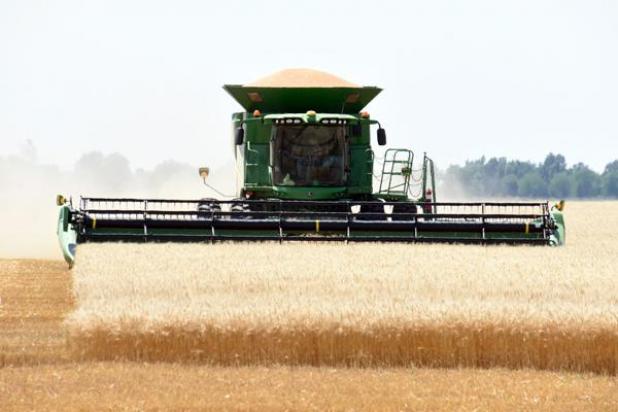
A local team operates a combine in a wheat field east of Holyoke last year. — The Holyoke Enterprise | Johnson Publications
New tech, regulations changing the face of America’s 2,000-mile annual wheat harvest
Every May, bands of custom harvesters from across the country load up their trucks and head south, toward Texas and the southern periphery of America’s grain belt.
The reason for their journey is wheat — America’s spring, winter and durum wheat crop, which is harvested between May and September in a cycle known colloquially as the “2,000-mile harvest.”
Tens of millions of acres of American cropland are dedicated to wheat production each year, and the annual harvest sends crews on a mission from the U.S.-Mexico border north to the edge of Canada.
Since the explosion of custom harvesting during World War II — when the demand for wheat boomed and labor and machinery were in short supply — new technology and regulations have made the harvest simpler and safer than ever.
But those same developments have come with a price: the erosion of the unique culture that developed around the annual migratory harvest, which gave many young people their first jobs and their first taste of responsibility as adults.
When Holyoke resident and custom harvester Ivan Wiebke bought his first combine at age 22 in 1972, he said the crews offered the kinds of career opportunities for young people that don’t exist today.
Though he no longer follows his former itinerary, stretching from Texas to upper Montana, he estimates that his crew has employed about 100 young people.
“It’s sad, because that was a great learning experience,” he said. “Having to take on big responsibilities really changed a lot of them.”
Custom harvesting has also been a tradition for many families, who bring their children along to share in an all-important and worldwide rural tradition. Wiebke said he had several nephews and two brothers join him on harvest trips over the years.
While many farmers still rely on the services of custom harvesters, especially for wheat, shrinking acreages and the growing size of combine heads have both contributed to the decline of the 2,000-mile harvest.
It’s also led to smaller, older crews and a higher demand for skilled labor. Combine operators today are required to possess a commercial driver’s license, and combines are moved using semitrucks rather than single-axle trucks.
Still, for mechanically apt young people interested in earning their CDL, Wiebke said the things that made the harvest special for him and other young people are still a central part of the cross-country journey.
The full article and more like this are available in the 2019 Salute to Grain section. Click here to read for FREE: https://etypeservices.com/SWF/LocalUser/Holyoke1//Magazine262191/Full/in...
